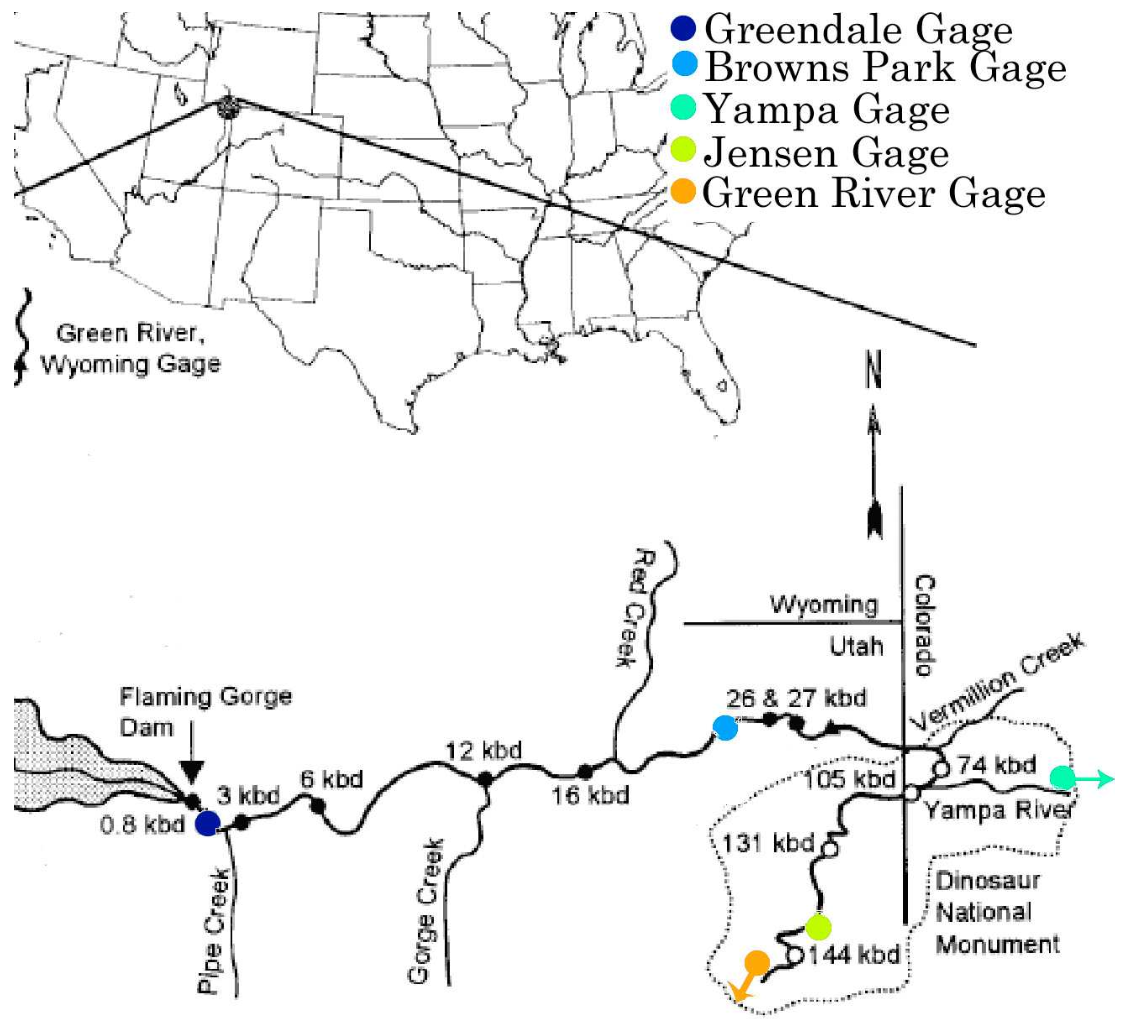ABSTRACT
Salmonid abundance and distribution in the Green River between Flaming Gorge Dam the Split Mountain Boat Ramp (middle Green River, Figure 1) are governed by recruitment, habitat requirements and interspecific competition, played out on the framework of the Green river hydrology and geomorphology. Although salmonids historically did not inhabit the middle Green River after the end of the last glaciation, construction of the Flaming Gorge Dam in 1962 drastically reduced water temperature and silt in the middle Green River, creating habitat that meets salmonid needs for cool, clear water. The tail water and downstream section of the Green support four types of salmonids: brown trout (Salmo trutta), rainbow trout (Oncorhynchus mykiss), Snake River cutthroat trout (Oncorhynchus clarki bouvieri), and mountain whitefish (Prosopium williamsoni).

While the brown trout and the whitefish are self- sustaining populations, the rainbow and cutthroat trout are maintained through a large stocking effort (Schneidervin 2006, personal communication). Salmonid abundance patterns result from both food availability and the influx of new trout every year through natural reproduction and stocking.
With the exception of P. williamsoni, the salmonids are closely related and have very similar habitat requirements. On a broad scale, temperature and food limit the distribution of all salmonids in the middle Green River. On the microhabitat scale, competition between species determines where individuals from a given species are found. The serial discontinuity concept, which provides a paradigm for understanding the impacts of a dam and their pattern of amelioration (Stanford and Ward 2001), informs consideration of the abundance and distribution of these fishes. For example, as water temperatures downstream from the Flaming Gorge dam return to more natural, warmer temperatures, habitat suitability for salmonids tapers off, until the water temperature finally exceeds their tolerance levels. Overlaying salmonid habitat requirements and competitive interactions on the river model generated by the serial discontinuity concept generates testable hypotheses concerning salmonid abundance and distribution in the middle Green River.
